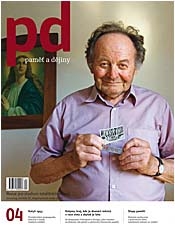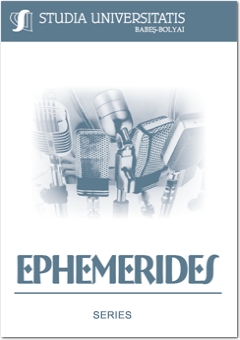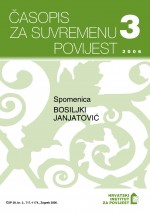


An interview with the young french writer Laurent Binet. He spoke about the czechoslovac history, a dialogue with the reader, and about the heroism of Jozef Gabčík and Jan Kubiš.
More...
Did Germany participate in the Katyn massacre? Was the murder of Polish officers coordinated with the Nazi’s repressive AB-Aktion operation? To what extent are similar stories true? Are they supported by archive documents and contemporary testimony? This study by the Polish historian Witold Wasilewski offers an extensive evaluation of the facts surrounding Soviet-German cooperation in Poland. By analysing the data that ensues from this work, it seems most likely that the Nazis had no idea about the Katyn murders until April 1943, and that they did not provide any cover or support for the NKVD’s actions despite previous mutual cooperation.
More...
In the course of the First Indochina War (1946–1954), more than 2,000 former Czechoslovak citizens fought in the uniform of the French Foreign Legion. Around 500 of them died on the battlefield in Southeast Asia. Roughly 115 Czechoslovaks ended up being captured by the Vietnamese in the course of the conflict. At least 17 more deserted to side with the Viet Minh. Ladislav Kudrna describes the living conditions in the detention camps as well as the fate of Czechoslovak prisoners and deserters during and after the war, and upon their release from captivity.
More...
An interview with Semyon Vilensky - a former prisoner of Kolyma.
More...
History described through fotographic portraits of victims of totalitarian regimes. The author of these pictures won the Czech Press Photo award with this reportage.
More...


The liquidation of Poland’s national elite in the uniforms of the Polish Army is a story with many twists and turns, both in the actual disclosure of this appalling crime and in the context of international politics at the time, as well as during the subsequent Cold War era. Publicising the discovery of mass graves in April 1943 could not have been done without the participation of certain personalities from the Protectorate of Bohemia and Moravia or without a mass propaganda campaign in the Protectorate’s press and radio broadcasts. Thanks to some partial studies, the fate of the pathologist Professor František Hájek and the writer František Kožík, who were confronted directly with the situation in Katyn Forest, is relatively well known. Both these witnesses to the exhumations in the forest were still forced to explain their presence there long after the war, and their “transgression” stayed with them till the end of their lives.
More...
The article contains book reviews. The review authors and titles of reviewed book are listed below in the original language. Cholínský, Jan: Dagmar ŠIMKOVÁ: Byly jsme tam taky. Vydala Monika Elšíková, Praha 2010, 163 s. Hanzlík, Jan:Jiří ŠULC: Mosty do Tel Avivu, Knižní klub, Praha 2010, 557 s. Tichý, Martin: Sametová revoluce v Ústí nad Labem. Svědectví studentů po dvaceti letech, Editor Jaroslav Rokoský, Filozofická fakulta Univerzity J. E. Purkyně, Ústí nad Labem 2009, 152 s. Kudělková, Jana: Jan HLACH: Požár aneb pět povídek z padesátých let a jeden sen, Ilustrace Vojtěch Vojtěch, PRAAM, Písek 2010, 72 s. Kudrna, Ladislav: Laurent BINET: HHhH, Překlad Michala Marková, Argo, Praha 2010, 346 s.
More...


The arrest and trial of founding officers of State Security (StB) is an important chapter in the history of the Czechoslovak security services. Karel Černý was also one of those arrested. The staffing “architect” of the StB was tried as part of the Osvald Závodský group. Černý was transformed from a person who actively participated in the construction of the new security apparatus (particularly State Security) after May 1945 into a “detested and despised enemy” of the Communist Party of Czechoslovakia (KSČ). In a manner similar to more famous cases, the KSČ also rewarded him for his “services” with a jail sentence lasting several years. Naturally, it is necessary to add that the convict wholly deserved to serve his sentence.
More...
One of the most typical and obvious activities of the anti-communist “third” resistance was the work carried out by couriers (“agent-couriers” in State Security terminology). These people crossed the borders between the free and unfree world in order to fulfil a whole range of dangerous tasks, particularly tasks connected with intelligence gathering. They were people who had various motives for working with Western intelligence services (besides patriotic reasons, they could also have had material incentives). Among the hundreds of people involved in this activity, we can find the names of two young men, Rudolf Fuksa and Jiří Hejna, who paid the highest possible price for their decision to take a stand against communist power. Their first mission as couriers was also to be their last.
More...
Keywords: image; audience; performing arts; opera.
Image of the Romanian National Opera in Cluj-Napoca among its Audiences. This paper seeks to explore the image of the Cluj-Napoca Romanian National Opera [Opera Naţională Română Cluj-Napoca (ONRCN)] among its audiences. This has been done by asking participants (members of the audience) to rate various characteristics on a Likert-type scale. Socio-demographic predictors of attribute ratings are also explored. The results and their interpretation reveal the strengths and weaknesses of the institution’s image and possibly explain why the institution is perceived the way it is by its audiences.
More...
Keywords: anthroponyms; journalism; pseudonyms; last name; first name.
Anthroponymy and Journalism. The way we, as journalists, sign our articles is quite important; we must knowingly take this decision and the signature should represent us. Some use first name initials followed by a last name. Others sign in full name, while there are authors who use pseudonyms instead of real names. Neither of the above possibilities is free of psychological connotations. To understand the phenomenon, a study of Romanian anthroponymy, which has undergone changes along time, is needed. A certain era, the innovative fashion and borrowed names from other languages have led to anthroponymy developments. In this paper we aim to address Romanian onomastics issues, from the journalism point of view. We are therefore discussing topics such as the formation of surnames, how some of them came to be widespread and sources of inspiration for first names.
More...
Keywords: cultural determinism; technological determinism; consumption; culture; audience.
The present study does not represent an exhaustive research but an overview of the Romanian cultural blogs and the influences of technological and cultural determinism. While traditional media confronts with severe problems regarding cultural journalism, and is rapidly disappearing, new media combines the existing media sources and it is becoming more efficient, even though sometimes it respects low qualitative standards. The present research concentrates on how media form changes cultural information and how the practice of culture causes technological changes. Also, we presented a short analysis of the strategies for using and consuming new media which are distinct from the one referring to the consumption of the so-called traditional media. We tried to show that technological determinism looks at the new media explicitly as a channel - mediated through digital transmission.
More...
Keywords: Bericht; Grenzliteratur; französischer Einfluss; Mysterienroman; Avangardismus; Echtheit; Meinungen zum Bericht.
Die rumänische Reportage in der Zwischenkriegszeit. Themen und Debatten (II). In der Zwischenkriegszeit waren die Haupteinflussquellen der rumänischen Berichterstattung die französische Kultur und der Avantgardismus. Über diese Einflüsse hinaus findet der Bericht, als epische Gattung die Korrespondenz in dem Mysterienroman des XIX Jahrhunderts. Die Wichtigste Stimme der Epoche, bezüglich der Durchsetzung des Berichts war Geo Bogza, dessen Namen an die Untersuchungen in den Seiten der Wochenzeitung „Vremea“(1934) gebunden ist. Die vorgeschlagene Debatte leitet die Rubrik ein „.. im Gespräch über die Reportage und hat als Hauptdarsteller: N. D. Cocea, Felix Aderca, Mircea Eliade, N. Davidescu şi Felix Brunea-Fox.
More...
Keywords: European Union; mass media; TV news channels; ARTE - a European cultural television channel; UBB Radio.
The Reflection in the Media of the European Construction Process. The paper explores how the model of European society is shaped and promoted through mass media. In analyzing the current context of the evolution of European construction and the institutional space of the media, I focused on two issues - (i) an analysis on three levels, namely national, transnational - within EU, and the EU's external relations as an entity, and (ii) within the aforementioned analysis, the study of four comprehensive and significant elements for the reflection in the media of the European construction: - At the national level, the functioning of UBB Radio that has as main goal to promote the core values of the EU and to make public the construction processes of the Union. - At the transnational level - within the European Union, the reflection in the media of an important event in the life of the EU - the second referendum for the adoption of the Lisbon Treaty in Ireland, as presented by five important TV news channels: BBC World News, France 24, Deutsche Welle TV Europe, Euronews and CNN International Europe. - At the European Union level, the promotion of the Union, of the European values, through a Franco-German TV station with a special media profile and a particular role, namely channel Arte. - At the EU's external relations level, the way the EU outlines itself as a global economic player, as a landmark of culture and civilization, and as a geopolitical, military and international security actor, as illustrated in the news bulletins of five important TV news stations, namely CNN International Europe, Al Jazeera English, CCTV News, Russia Today and Euronews.
More...
Keywords: Muslims; Bosnia and Hercegovina; Ustaša Emigration; Independent State of Croatia
The author discusses the relations between Pavelić's Ustaša organization and the Bosnian-Hercegovinian Muslims, who it considered Croats. After the establishment of the Independent State of Croatia, the Ustaša regime pays them a great deal of attention. But when the Chetnik uprising and the Partisan movement transformed Bosnia and Hercegovina into a region of bloody fighting, the Muslim population grew ever more dissatisfied, observing that the Ustaša authorities were not protecting them sufficiently. The resolutions of prominent Muslims sought more effective protection, even directing a special memorandum to Hitler.
More...